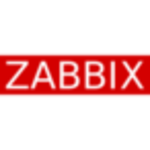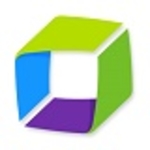What is our primary use case?
I use it to solve issues that my clients encounter, such as application slowness. It helps me identify whether the issue is related to the database, server, or CPU memory management.
Moreover, I use it to find solutions and provide recommendations to my colleagues.
What is most valuable?
This solution not only provides answers but also provides sensor data. This allows us to quickly resolve issues that developers may take a long time to solve. In essence, it helps us address problems at an early stage. Moreover, it is especially useful in production servers where real users encounter numerous issues.
There are numerous issues that arise during peak times, and AppDynamics makes it easy for us to identify the problem areas and determine the appropriate resolutions. This is how it helps us find solutions effectively.
What needs improvement?
Regarding improvements, I believe the dashboard could be more optimized. Although it claims to be optimized, I think it should be even more convenient, especially for advanced users.
Additionally, the documentation can be a bit challenging. It would be beneficial if the documentation provided clear solutions for every problem. In my opinion, the documentation could be improved.
For how long have I used the solution?
I worked with AppDynamics for around three to four months. I have been working directly with it for the past year.
I use the latest version.
What do I think about the stability of the solution?
It is stable, but the only downside is the licensing part. Other than that, it's a reliable product with no major issues.
What do I think about the scalability of the solution?
It is highly scalable. There are no additional limitations in terms of scalability.
In my company, we have around 50 to 100 clients using this tool. Although it can be a bit expensive, it is still being used extensively to solve various problems.
How was the initial setup?
It's straightforward, not too complex. However, it requires proper learning to effectively use it.
The deployment process typically takes around one to two hours, depending on the system. Once the setup is complete, we can proceed with the implementation process.
First, there's a need for basic knowledge of OS, especially for Windows and .NET. Additionally, understanding concepts like Dynatrace and AppDynamics, their functioning, and architecture is crucial. These are the key methods involved in the deployment process. If it's a cloud solution, then AWS or Azure are the recommended options. If it's on-premises, then using either Linux or Windows is ideal.
What about the implementation team?
For deployment, we need to focus on event configuration, which involves learning about network events and configuration. Once we understand this, we can proceed with the deployment setup. There is no frequent deployment. In case the deployment is not satisfactory, we may need to learn about Linux and Windows concepts.
What was our ROI?
What's my experience with pricing, setup cost, and licensing?
It is an expensive solution. It's on a yearly basis. We need to pay for it annually.
Which other solutions did I evaluate?
I have used Dynatrace. The main difference between the two is that AppDynamics utilizes different data mechanisms, while Dynatrace uses a unified agent approach. This simplifies the complexity of Dynatrace, providing more visibility and root cause analysis. In terms of benefits, AppDynamics is more scalable than analytics.
What other advice do I have?
Overall, I would rate it a nine out of ten.
Which deployment model are you using for this solution?
Hybrid Cloud
If public cloud, private cloud, or hybrid cloud, which cloud provider do you use?
Microsoft Azure
Disclosure: My company does not have a business relationship with this vendor other than being a customer.


















